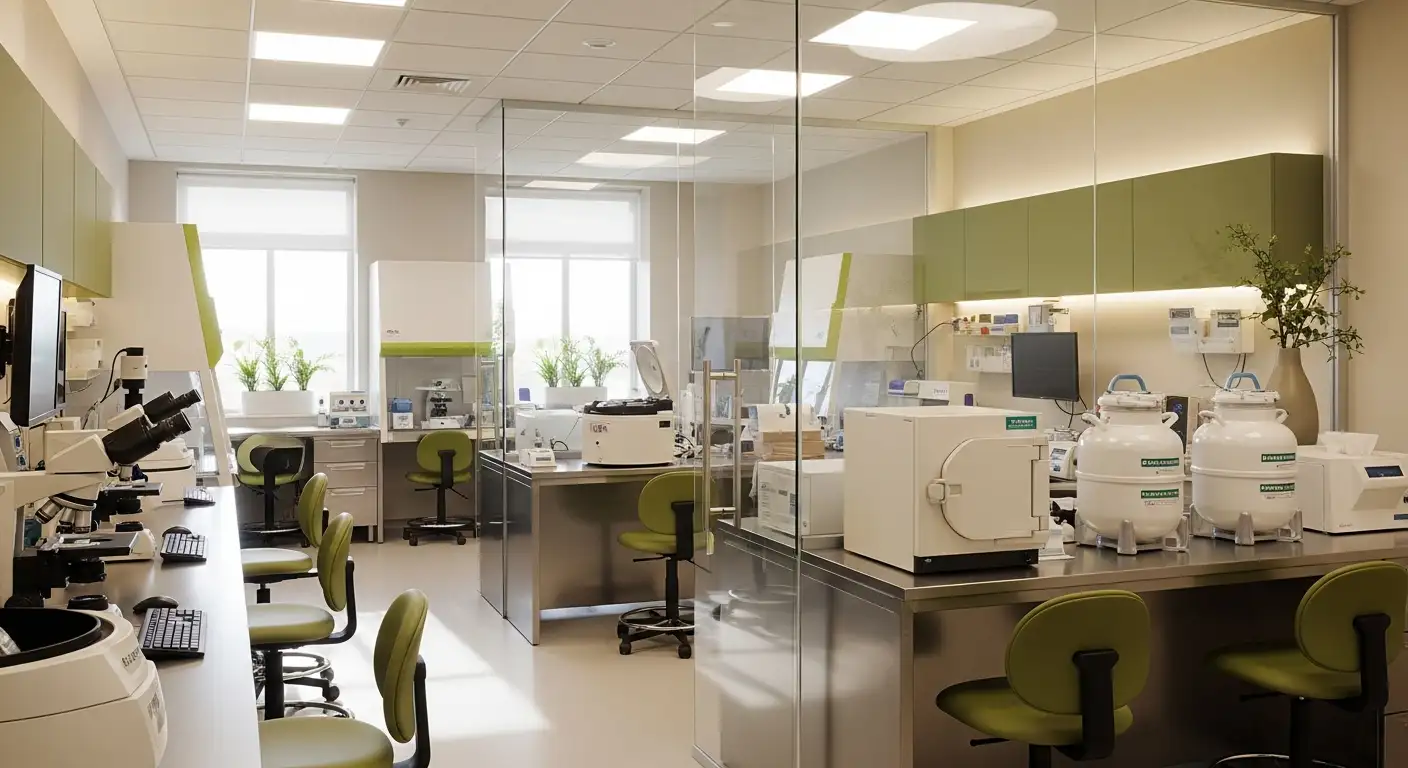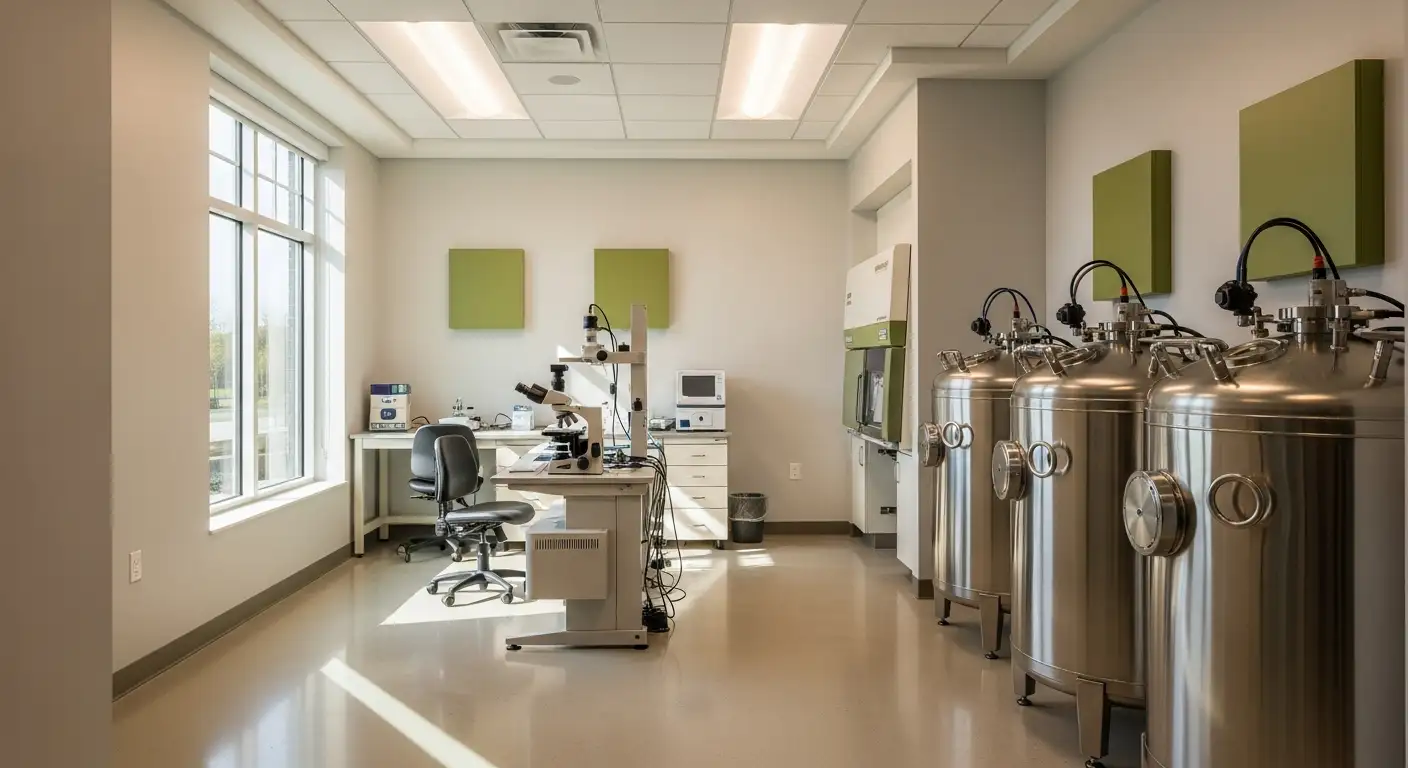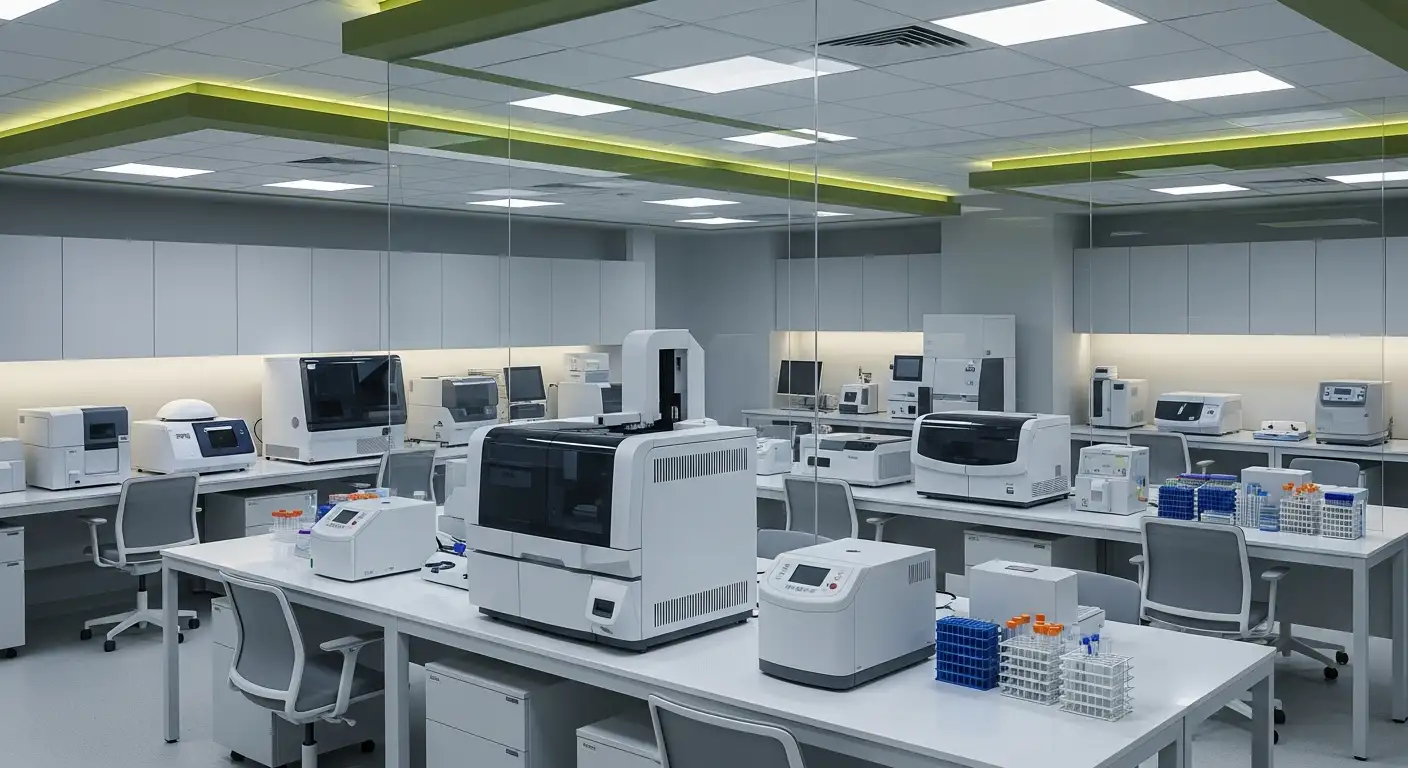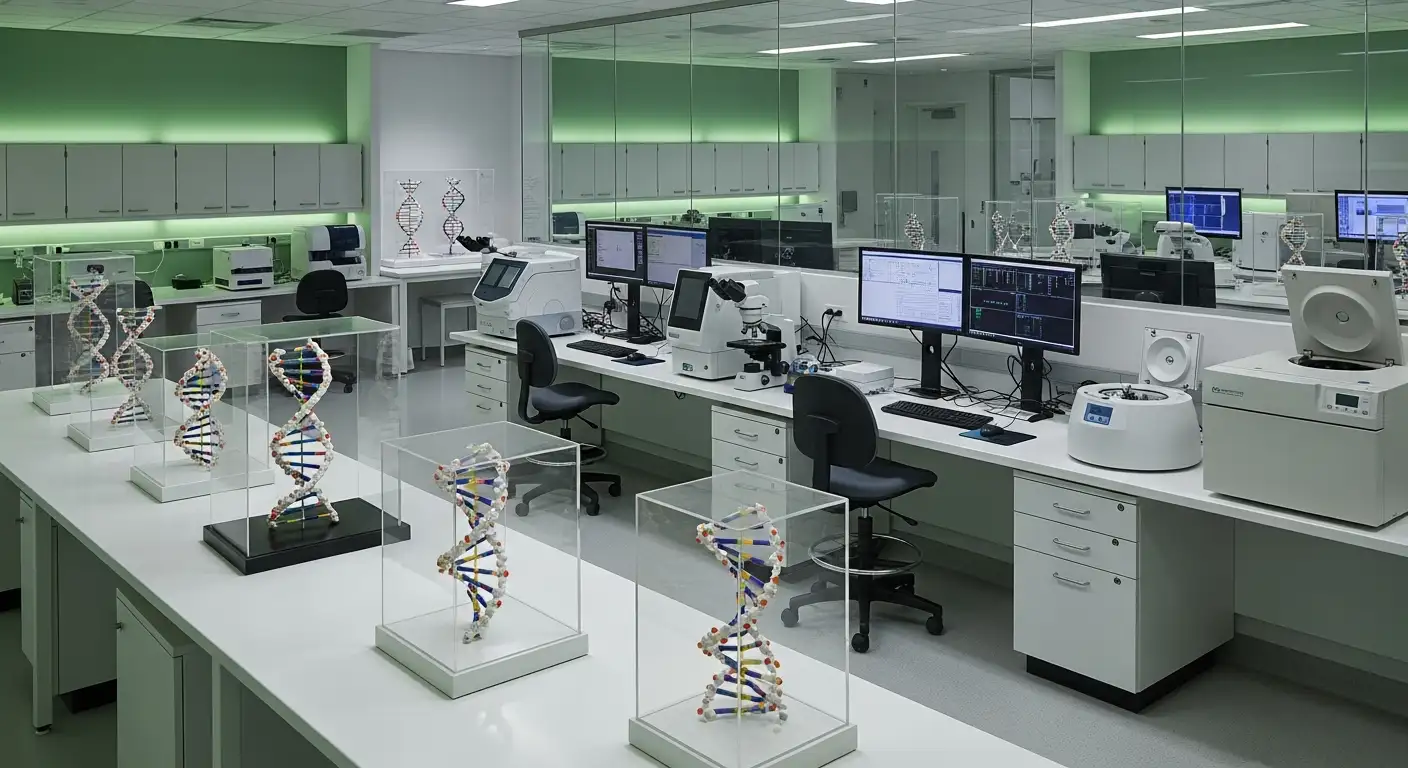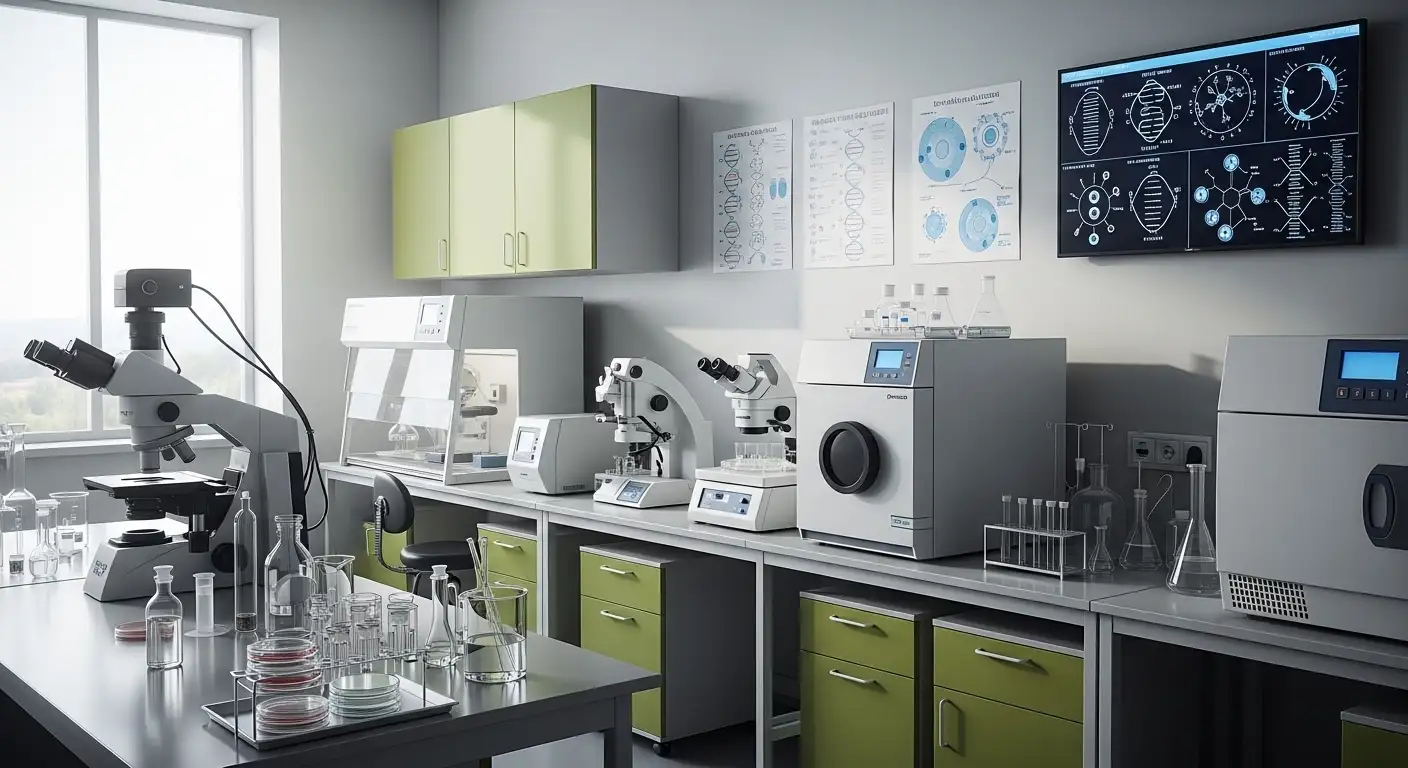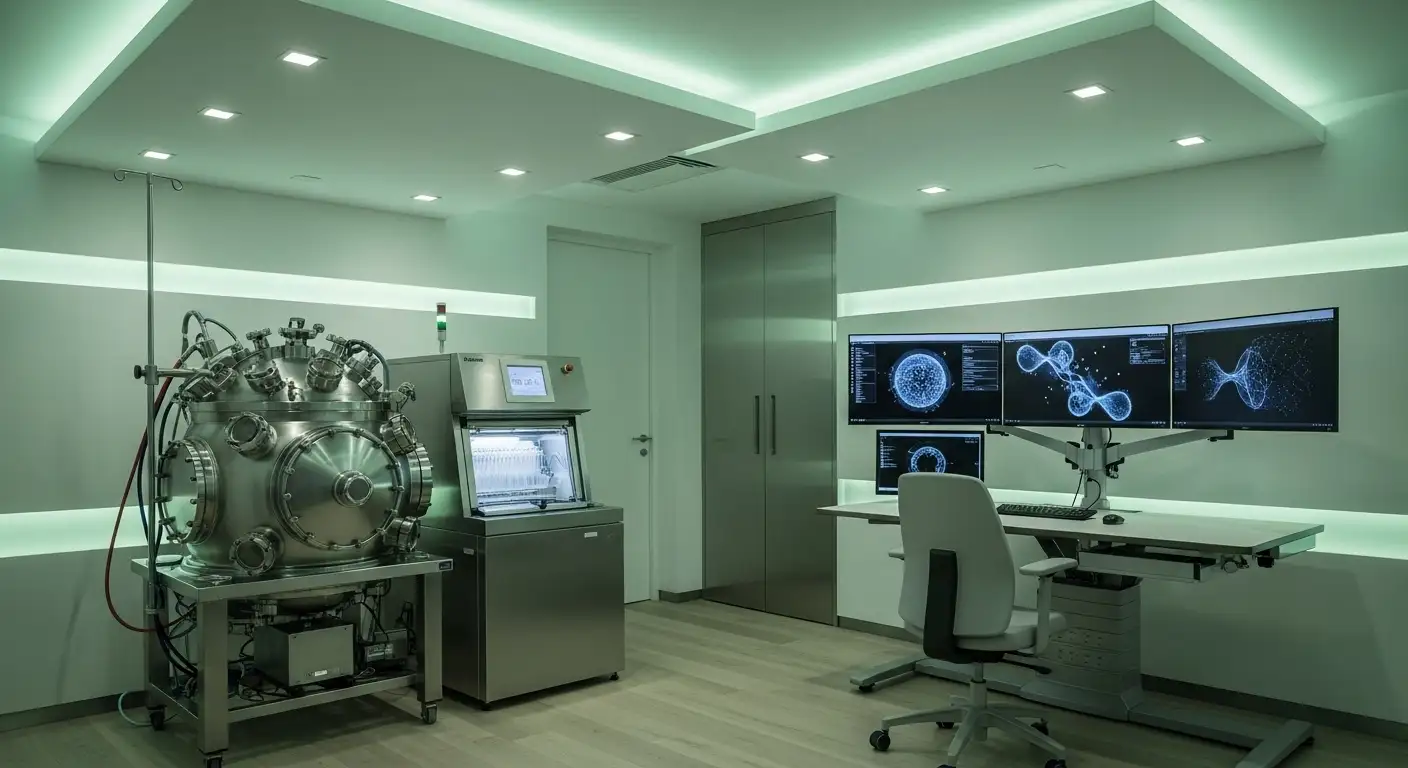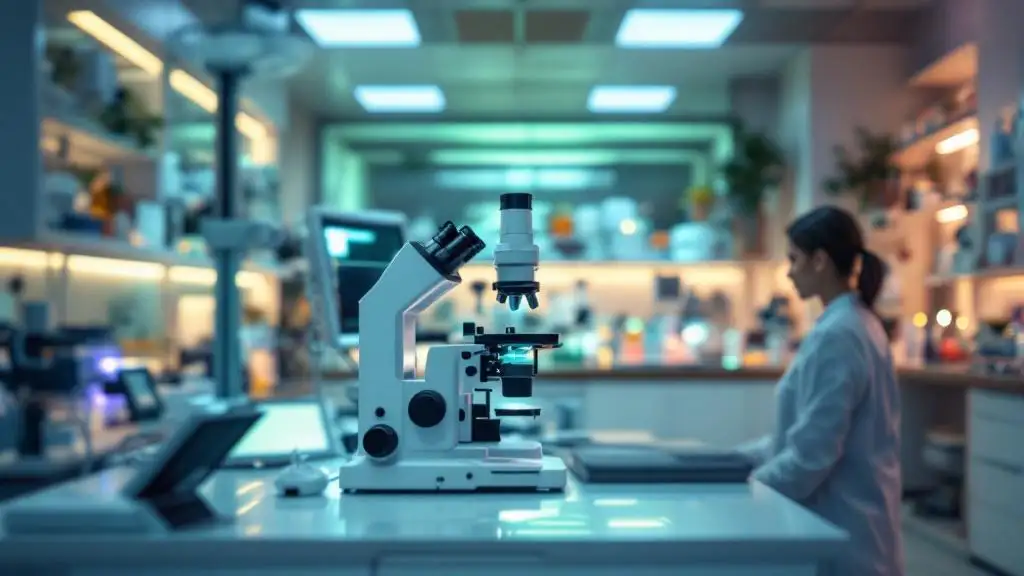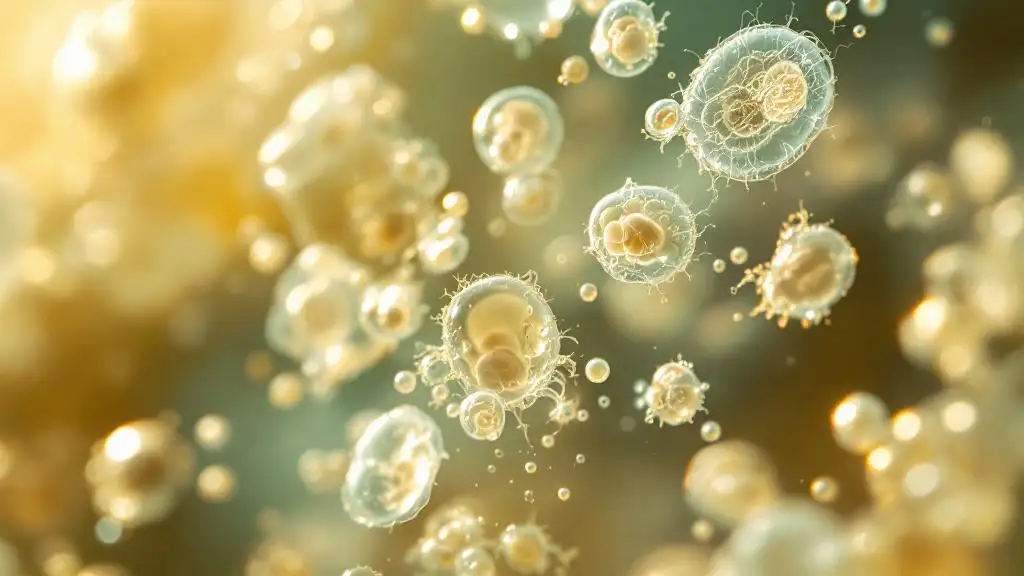Hormone therapy during fertility treatment explained
Understanding the Role of Hormone Therapy in Fertility Success

Introduction to Hormone Therapy in Fertility Treatment
Hormone therapy plays a crucial role in modern fertility treatments, helping to regulate, stimulate, and support reproductive processes. Its application ranges from inducing ovulation to preparing the uterine lining for embryo implantation, significantly increasing the chances of conception for women facing hormonal imbalances or other fertility challenges.
How does hormone therapy work in fertility treatment?
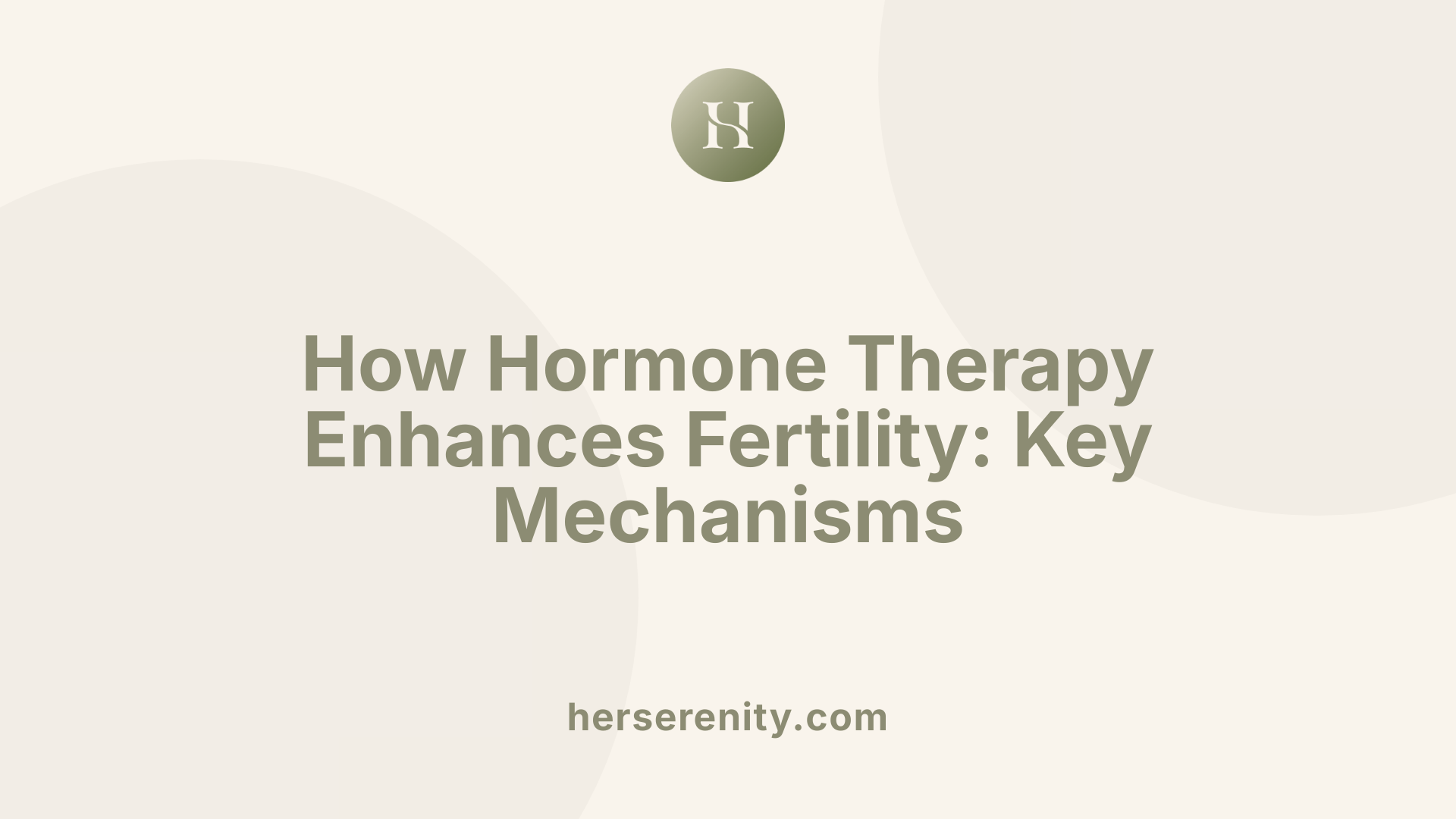
How does hormone therapy work in fertility treatment?
Hormone therapy plays a central role in modern fertility treatments by managing and optimizing the hormonal signals essential for reproduction. Its primary goal is to regulate or stimulate the body's natural hormone production to promote ovulation, prepare the uterine lining for implantation, and support early pregnancy.
In women experiencing hormonal imbalances, such as irregular cycles, poor ovarian response, or conditions like polycystic ovary syndrome (PCOS), targeted hormone treatments can restore normal ovulatory function. Medications like clomiphene citrate work by blocking estrogen receptors in the hypothalamus, leading to increased secretion of FSH and LH, which encourages ovulation.
Gonadotropins, such as follicle-stimulating hormone (FSH) and luteinizing hormone (LH), are injectable medications that directly stimulate the ovaries to develop multiple follicles. The use of human chorionic gonadotropin (hCG) mimics the natural LH surge, triggering the final maturation of eggs and ovulation.
In assisted reproductive procedures like in-vitro fertilization (IVF), hormone therapy is used intensively to stimulate the ovaries to produce multiple mature eggs during a single cycle. This involves controlled ovarian hyperstimulation protocols, which include daily injections of FSH or combined gonadotropins, often combined with GnRH agonists or antagonists to prevent premature ovulation.
Monitoring through ultrasounds and blood tests ensures optimal follicle development and hormone levels, allowing precise timing for egg retrieval and fertilization. Hormone support does not stop after egg retrieval; progesterone supplementation is given to support the uterine lining, increasing the chances of implantation and sustaining pregnancy.
Overall, hormone therapy in fertility treatment is carefully tailored to the individual’s hormonal profile, health status, and specific reproductive issues. It aims to recreate a hormonal environment conducive to conception, thereby significantly increasing the likelihood of pregnancy.
How does hormone therapy work in fertility treatment?
| Aspect | Function | Medications | Details |
|---|---|---|---|
| Regulation of ovulation | Stimulates or triggers ovulation | Clomiphene citrate, gonadotropins (FSH, LH), hCG | Induces ovulation in women with irregular cycles or anovulation |
| Ovarian stimulation for IVF | Develops multiple follicles | FSH, GnRH analogs | Controlled ovarian hyperstimulation (COH) protocols |
| Endometrial preparation | Supports implantation | Estrogen, Progesterone | Creates a receptive uterine lining |
| Support for early pregnancy | Maintains luteal phase | Progesterone | Post-embryo transfer support |
By understanding these mechanisms, fertility specialists can design personalized treatment plans that maximize reproductive success.
The role of hormone therapy in women with hormonal imbalances
Hormone therapy is especially vital for women with conditions disrupting normal hormonal cycles. For example, women with low FSH or LH levels may not ovulate spontaneously, so medications like clomiphene or gonadotropins are employed to induce ovulation.
In cases where prolactin or thyroid hormones are imbalanced, hormones like bromocriptine or thyroid hormone supplements are used to restore normal function.
For women with diminished ovarian reserve indicated by blood tests measuring Anti-Müllerian hormone (AMH) or high FSH levels, hormone therapy aims to stimulate or optimize the remaining follicular activity.
In summary, hormone therapy acts as a tailored intervention that addresses specific hormonal deficiencies or excesses, restoring the delicate balance necessary for conception and supporting a healthy pregnancy.
| Condition | Hormonal Imbalance | Treatment | Purpose |
|---|---|---|---|
| Anovulation (e.g., PCOS) | Low or absent ovulation | Clomiphene, gonadotropins | Induce ovulation |
| Low ovarian reserve | Elevated FSH, low AMH | Ovarian stimulation | Increase egg production |
| Progesterone deficiency | Low progesterone levels | Progesterone supplementation | Support implantation |
| Overproduction of prolactin | Elevated prolactin | Bromocriptine | Normalize prolactin levels |
Hormone therapy, when precisely administered, significantly improves the chances of conception and early pregnancy success in women facing these challenges.
Purpose of hormone therapy during fertility procedures like IVF and FET
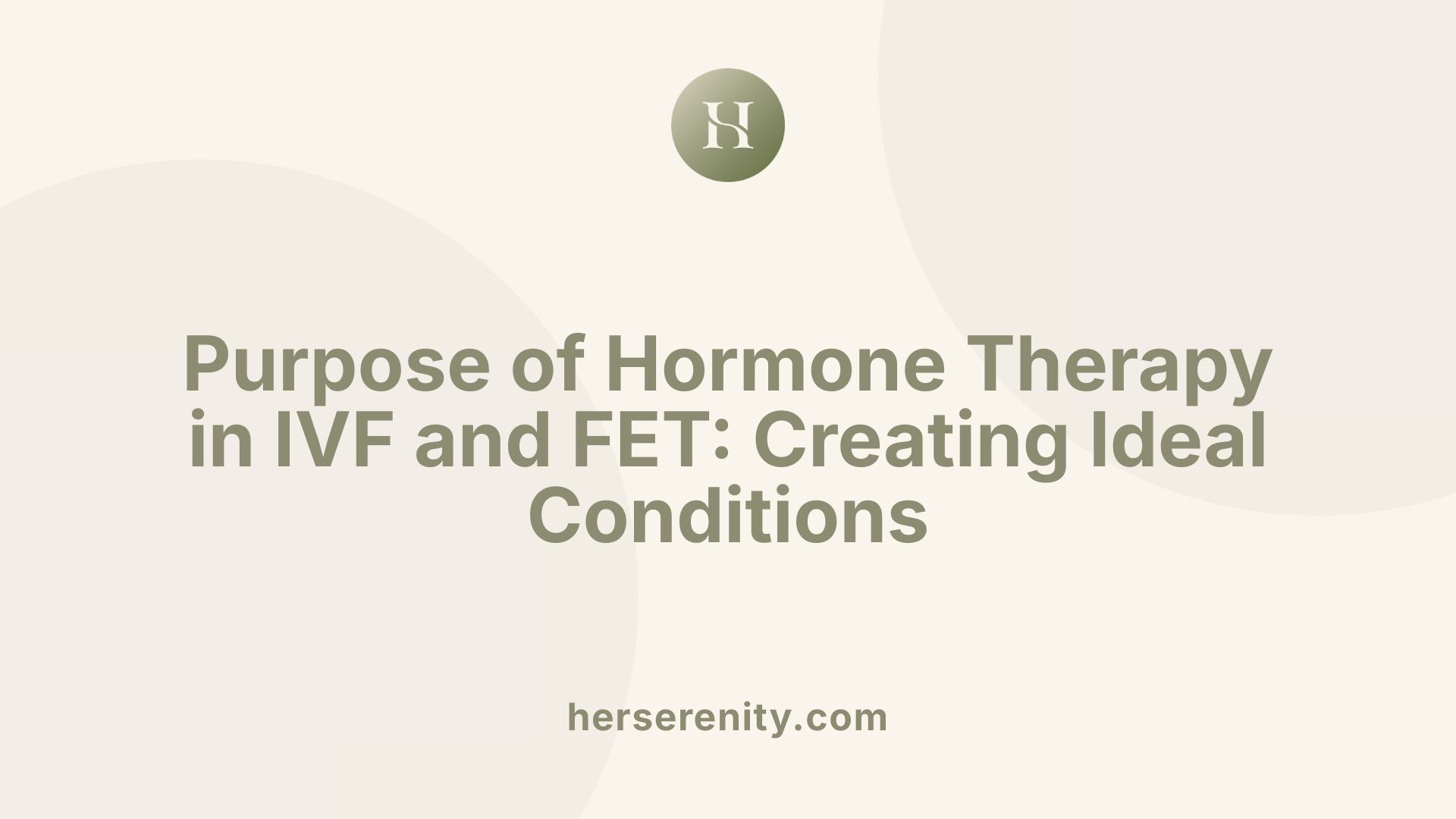
What is the purpose of hormone therapy during fertility procedures such as IVF and FET?
Hormone therapy during fertility treatments such as in vitro fertilization (IVF) and frozen embryo transfer (FET) is vital for creating the best possible conditions for conception and pregnancy. Its main goal is to regulate hormonal levels, ensuring that the woman's reproductive system functions optimally.
One of the primary objectives is to control ovulation. Typically, fertility medications stimulate the ovaries to develop multiple mature eggs, increasing the chances of successful fertilization. In IVF, hormones like FSH and LH are used to promote this process.
Another essential purpose is to prepare the uterine lining, or endometrium, to support embryo implantation. Estrogen is administered to promote growth and thickening of the endometrial tissue, making it more receptive to an embryo. Subsequently, progesterone is used to transform the endometrium into a secretory state conducive for embryo attachment.
Hormone therapy also helps address hormonal imbalances that may hinder conception. Conditions such as polycystic ovary syndrome (PCOS), endometriosis, or hormonal fluctuations can impair ovulation or reduce uterine receptivity. Supplementing with hormones like progesterone and estrogen can restore balance, enhance natural cycles, and improve the likelihood of implantation.
Throughout the IVF and FET protocols, hormone therapy involves various forms — including oral tablets, vaginal suppositories, injections, and patches — tailored to individual needs. Regular monitoring through ultrasounds and blood tests ensures appropriate dosing and timing, optimizing outcomes.
In addition to cycle regulation, hormone therapy during fertility procedures aims to prevent premature ovulation, synchronize follicle development, and support early pregnancy if conception occurs. This comprehensive hormonal support is crucial in maximizing the chances of success in assisted reproductive technologies.
Ultimately, hormone therapy in these procedures plays a critical role in mimicking the body’s natural hormonal environment, facilitating follicle maturation, ovulation, endometrial receptivity, and pregnancy sustainment, thereby significantly increasing the chances of conception.
Benefits and risks of hormone therapy in fertility treatments
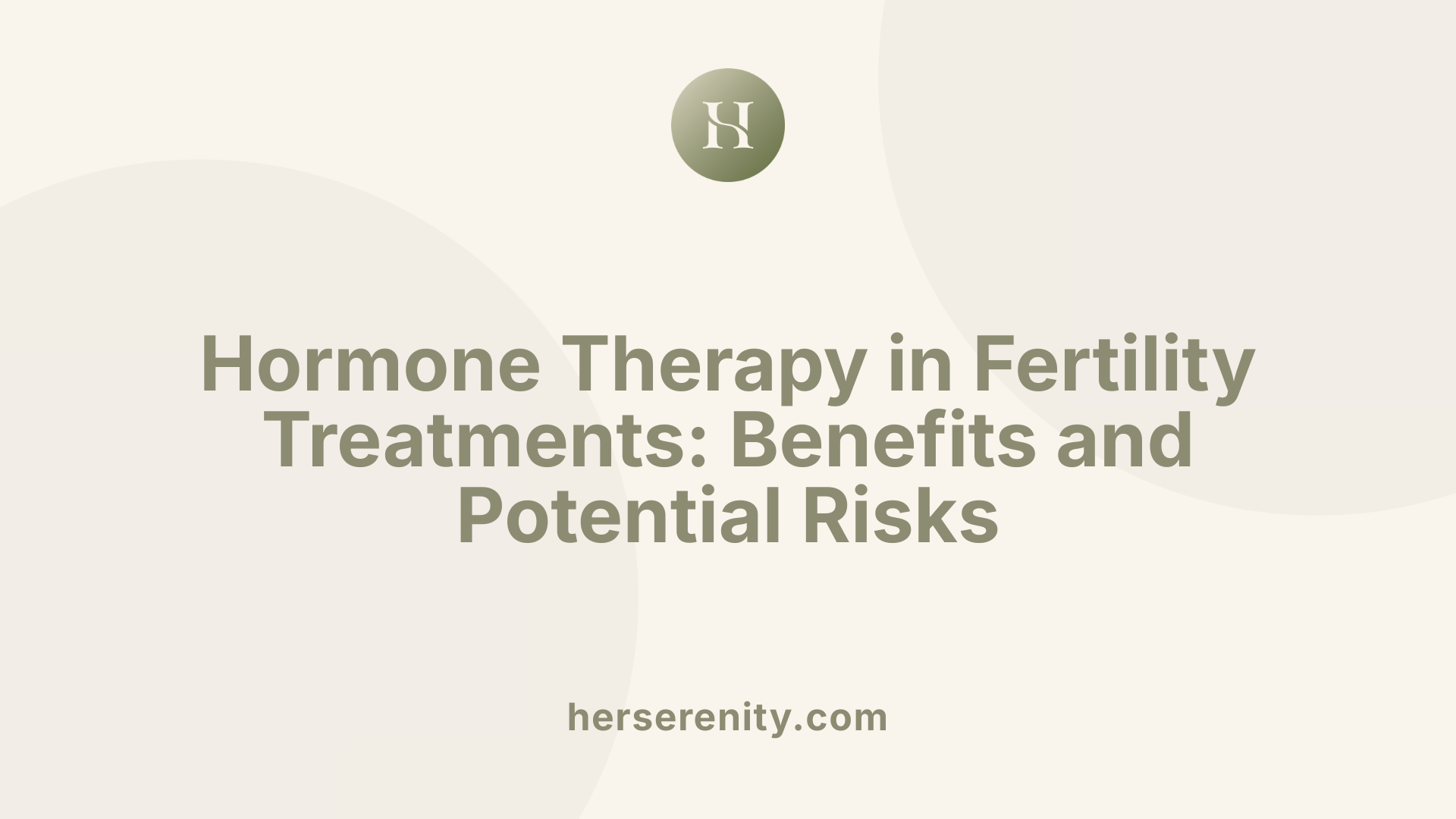
What are the benefits and potential risks or side effects of hormone therapy in fertility treatments?
Hormone therapy plays a crucial role in modern fertility treatments by helping women achieve pregnancy through hormonal regulation or stimulation. One of the primary benefits of such therapies is the increased likelihood of conception. By promoting ovulation and supporting the development of the uterine lining, hormone treatments can significantly improve pregnancy rates, especially in women with irregular cycles, hormonal imbalances, or diminished ovarian reserve.
In treatments like IVF, hormone therapy helps in synchronizing the endometrial lining, creating an optimal environment for embryo implantation. It can also assist in inducing ovulation in women who do not ovulate regularly, thus expanding their chances of conception.
However, while the benefits are substantial, hormone therapy does come with potential risks and side effects that women should be aware of. Common adverse symptoms include mood swings, hot flashes, breast tenderness, bloating, nausea, irritability, and cognitive or emotional changes. These symptoms are often temporary and manageable but can affect a woman’s comfort and overall well-being during treatment.
More serious risks associated with hormone therapy involve ovarian hyperstimulation syndrome (OHSS), a condition where the ovaries become swollen and painful, which in severe cases can lead to fluid buildup, blood clots, and other complications. The increased stimulation of the ovaries also raises the risk of multiple pregnancies — twins, triplets, or more — which carry higher risks of preterm birth, low birth weight, and other complications.
Furthermore, there is ongoing research and concern about the long-term effects of hormone therapy. Rare birth defects have been linked to certain fertility drugs, though recent studies have not confirmed these risks definitively. Other significant risks include potential hormonal imbalances that might affect reproductive health, and in some cases, the development of ovarian cysts.
Additionally, hormone treatments can induce reproductive sexual side effects, such as libido changes or menstrual disruptions. If not monitored properly, hormone therapy may also impair future fertility or cause other endocrine disturbances.
Given these considerations, it is essential for women to consult healthcare providers thoroughly before starting hormone therapy. Physicians can assess individual risk factors, explain the likelihood of success versus potential complications, and tailor treatment protocols to maximize benefits while minimizing adverse effects.
Types of hormone treatments and how they work in fertility therapy
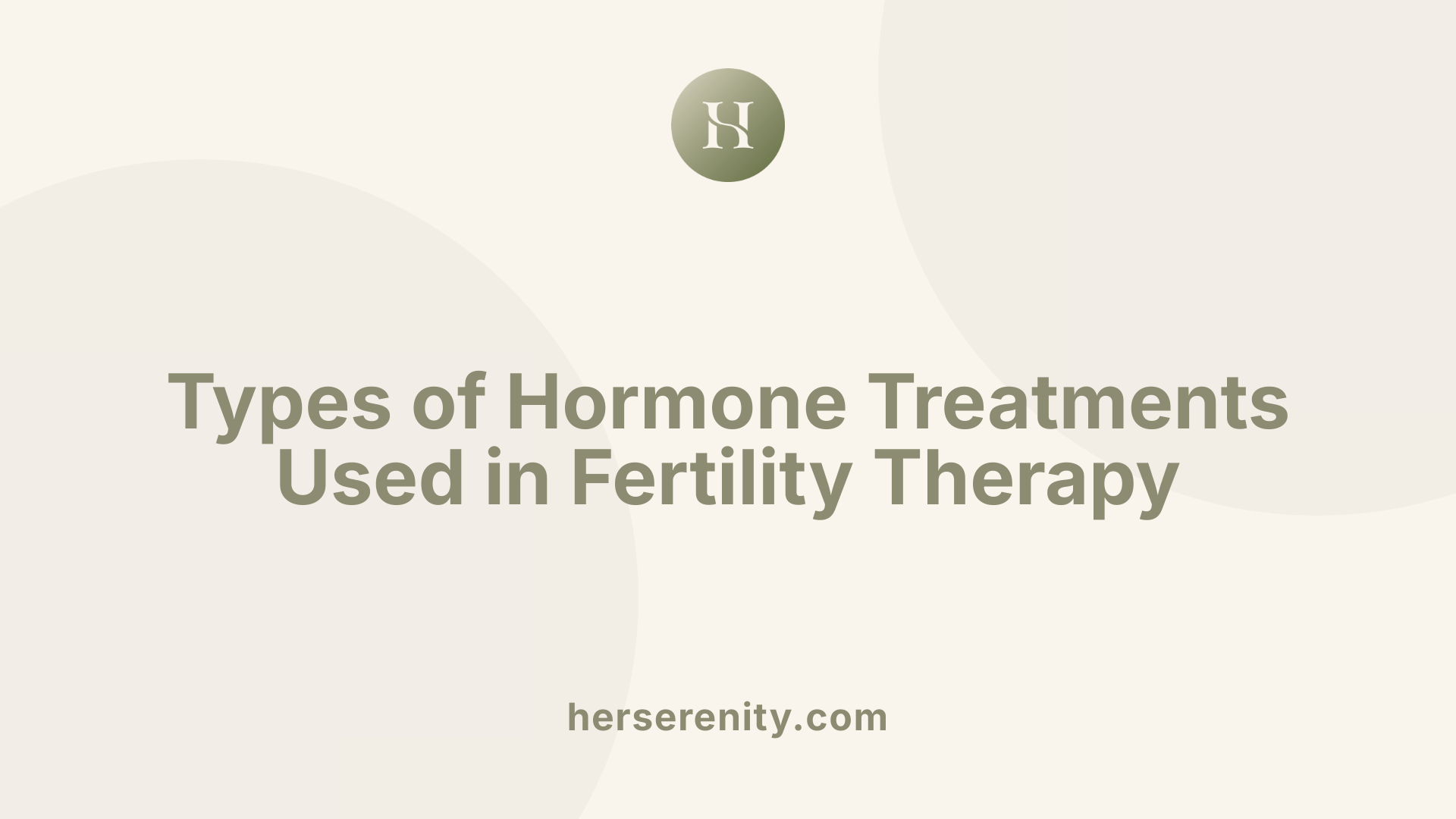
What types of hormone treatments and medications are used in fertility therapy, and how do they work?
Fertility treatments commonly employ a variety of hormone medications designed to stimulate ovulation, manage menstrual cycles, and prepare the uterus for pregnancy. Each medication targets specific aspects of reproductive physiology to optimize the chances of conception.
One of the most widely used drugs is clomiphene citrate. This oral medication acts as a selective estrogen receptor modulator, mainly blocking estrogen receptors in the hypothalamus. By doing so, it tricks the brain into perceiving a low estrogen level, which prompts increased production of gonadotropins—follicle-stimulating hormone (FSH) and luteinizing hormone (LH). This cascade encourages ovulation, with about 60%-80% of users ovulating within three cycles.
In cases where clomiphene is ineffective, injectable hormones are employed. These include FSH and LH, which are directly administered to stimulate the ovaries to develop multiple follicles. Human chorionic gonadotropin (hCG) is another critical injectable used to mature eggs at the optimal time by mimicking LH’s action in the body, triggering final follicle maturation and ovulation.
Gonadotropin-releasing hormone (GnRH) analogs, such as GnRH agonists and antagonists, are used to control natural hormone surges. They are particularly useful in assisted reproductive technologies like IVF to prevent premature ovulation during ovarian stimulation. These drugs allow precise regulation of FSH and LH levels, ensuring better control over the cycle.
Hormone treatments are also pivotal for supporting the endometrial lining and early pregnancy. Estrogen, often supplemented through pills or patches, aids in growth and thickening of the uterine lining, preparing it for embryo implantation. Progesterone plays a crucial role in transforming the endometrium into a secretory state receptive to embryo attachment. Progesterone can be administered via vaginal suppositories, injections, or oral forms.
In addition to stimulating ovulation, certain medications address underlying hormonal imbalances. For example, bromocriptine reduces elevated prolactin levels, which can interfere with ovulation, restoring regular cycles. Corticosteroids might be prescribed for women with excess adrenal androgens, normalizing hormone levels.
This comprehensive pharmacological approach enables fertility specialists to tailor treatment plans based on individual hormonal profiles, health status, and specific reproductive challenges, increasing the overall chances of conception.
Impact of hormone therapy on fertility outcomes and pregnancy success rates
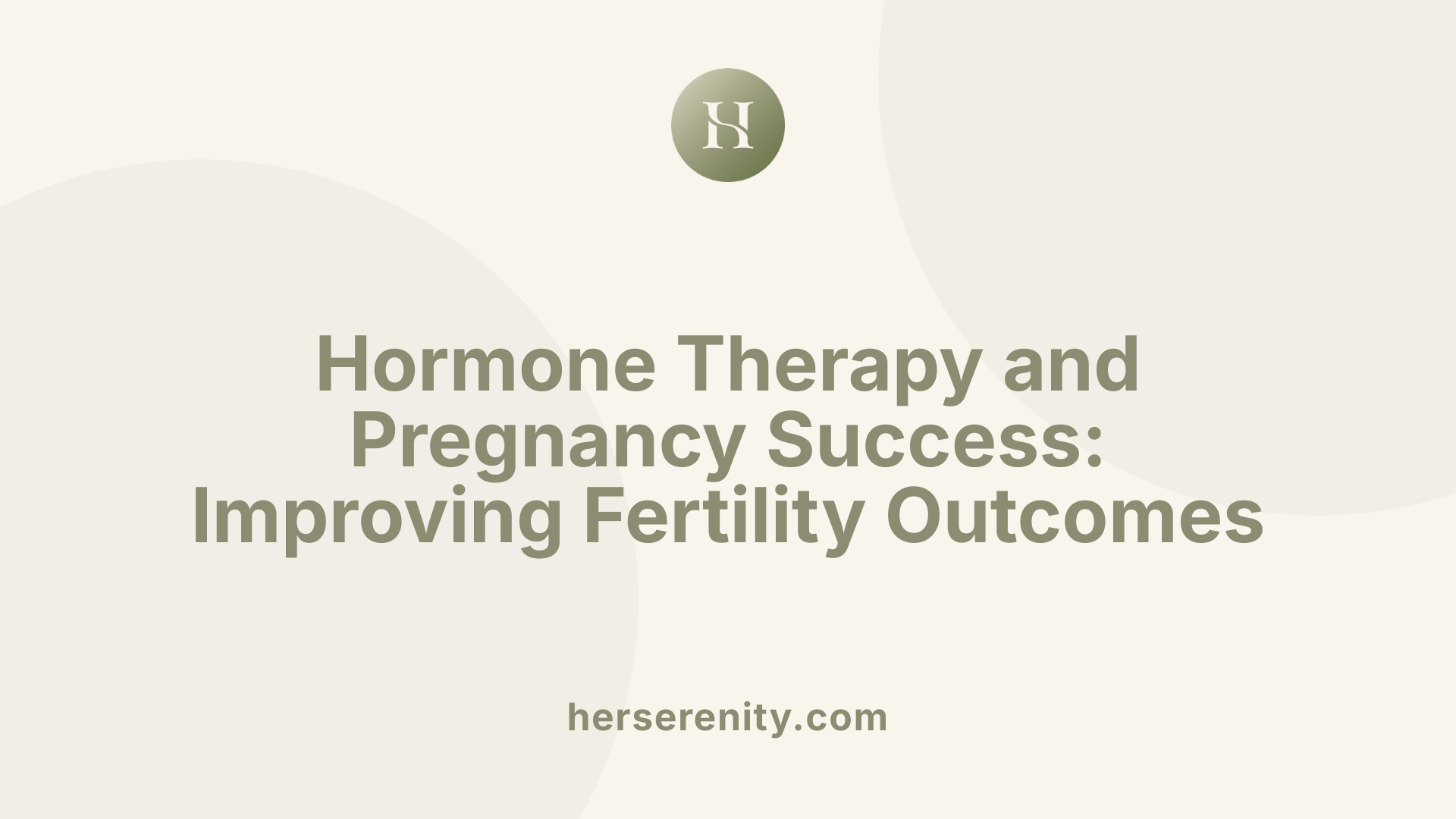
How does hormone therapy influence fertility outcomes and pregnancy success rates?
Hormone therapy can have a profound effect on reproductive health, influencing both ovarian and testicular functions. For transgender men undergoing testosterone therapy, the hormonal suppression often leads to halted ovulation, changes in ovarian tissue, and possible histological alterations. While some of these changes may be reversible upon discontinuation, the extent and timeline for restoring fertility are variable and not fully predictable.
In contrast, transgender women who receive estrogen therapy may experience impaired spermatogenesis, testicular atrophy, and reduced sperm quality. These effects can compromise natural fertility, although fertility preservation options are available.
Proper hormonal regulation through therapy can help restore fertility by re-establishing hormonal balance, which in turn facilitates ovulation in women and supports spermatogenesis in men. For women, estrogen and progesterone therapy used in fertility treatments can improve endometrial receptivity and regulate menstrual cycles, increasing the likelihood of successful conception.
However, the impact of hormone therapy is not always entirely reversible. Certain gender-affirming surgeries can lead to permanent sterilization, making pre-treatment fertility preservation essential for individuals wishing to conceive in the future.
Fertility preservation techniques, such as cryopreservation of oocytes, embryos, or sperm, are strongly recommended prior to starting hormone therapy. This ensures that reproductive potential is maintained, regardless of future fertility outcomes.
Overall, the influence of hormone therapy on fertility outcomes is complex. While it can pose challenges, appropriate management, monitoring, and counseling significantly improve the chances of achieving successful pregnancies later. Advances in reproductive medicine and individualized care continue to support better fertility prospects for those affected by hormonal treatments.
Hormone therapy for ovarian stimulation and endometrial preparation
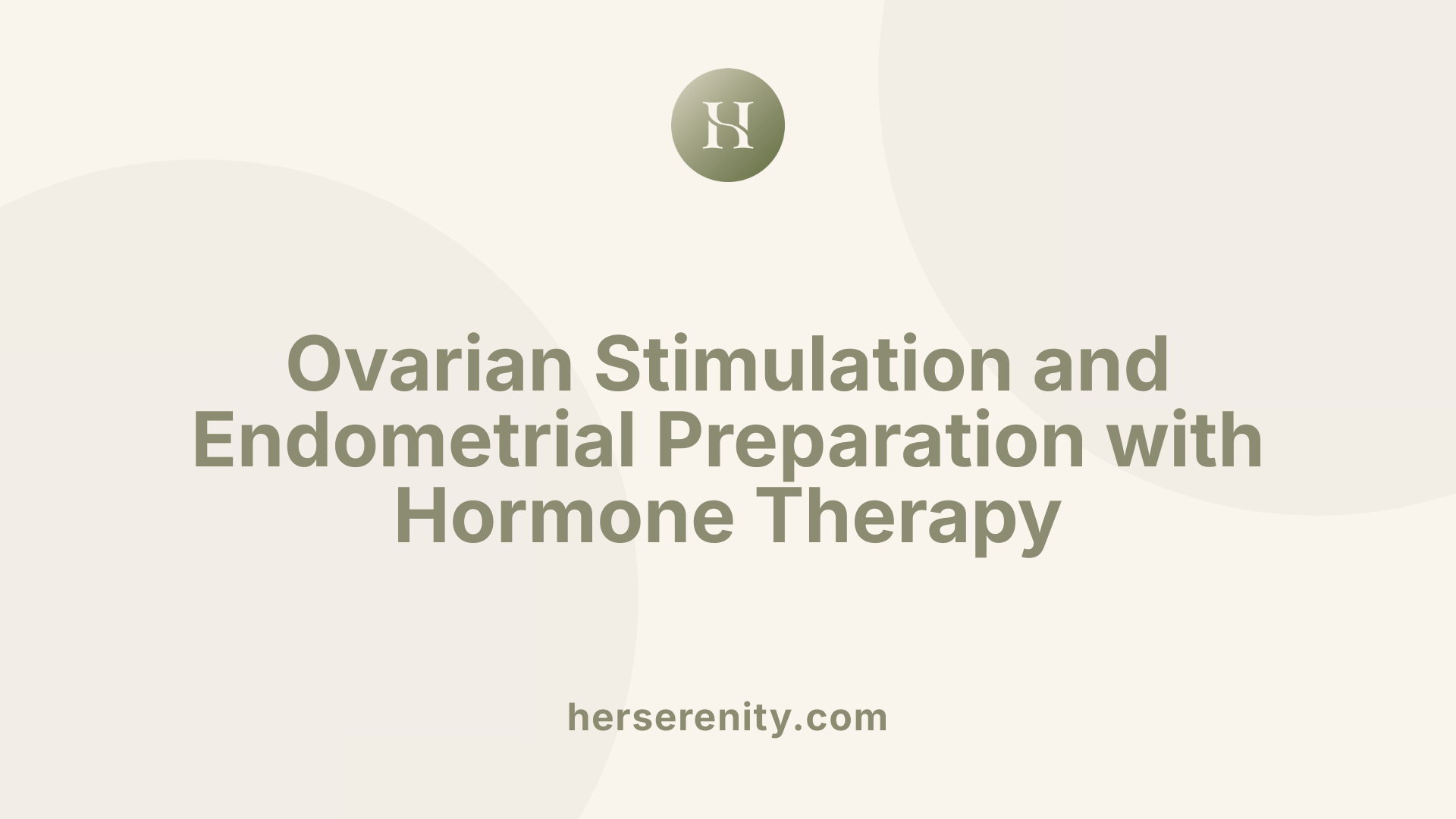
How is hormone therapy used for ovarian stimulation and endometrial preparation?
Hormone therapy plays a crucial role in optimizing conditions for conception, particularly in assisted reproductive techniques like in vitro fertilization (IVF). It involves administering specific hormones to stimulate egg growth and prepare the uterine lining for embryo implantation.
In ovarian stimulation, medications such as follicle-stimulating hormone (FSH) and human chorionic gonadotropin (hCG) are frequently used. FSH directly stimulates the ovaries to develop multiple follicles, increasing the number of mature eggs available for retrieval. The process often begins with daily injections of FSH over 10–14 days, accompanied by regular ultrasounds and blood tests to monitor follicle growth.
As the follicles mature, a trigger shot of hCG is administered approximately 35-36 hours before egg retrieval. This hormone induces final oocyte maturation, ensuring eggs are ready for collection.
For endometrial preparation, estrogen and progesterone are the primary hormones used. Estrogen, such as estradiol, is given early in the cycle to promote the growth of the endometrial lining. It can be administered orally, via patches, or injectable forms, typically starting on days 2–3 of the cycle. The goal is to achieve an endometrial thickness conducive to implantation.
Following estrogen priming, progesterone is introduced—most commonly through vaginal suppositories, intramuscular injections, or oral routes—to induce a secretory transformation of the endometrium. This mimics the natural luteal phase, making the uterus receptive to embryo transfer.
In hormone replacement therapy (HRT) cycles, ovaries are not stimulated to produce eggs. Instead, exogenous estrogen and progesterone replicate the natural hormonal environment of a cycle to prepare the endometrium. Timing is critical; estrogen is started early, and progesterone begins around the time of embryo transfer, usually on day 2-3 of progesterone administration.
Protocols may also include pretreatment with gonadotropin-releasing hormone (GnRH) agonists to suppress natural hormone fluctuations, improving control over the cycle and increasing chances of successful implantation.
Each step is carefully individualized based on patient response, hormone levels, and ultrasound findings. The goal of these hormonal interventions is to ensure a receptive endometrial lining and synchronized development of the ovarian follicles, maximizing the likelihood of pregnancy.
The process of hormone replacement therapy in fertility treatments
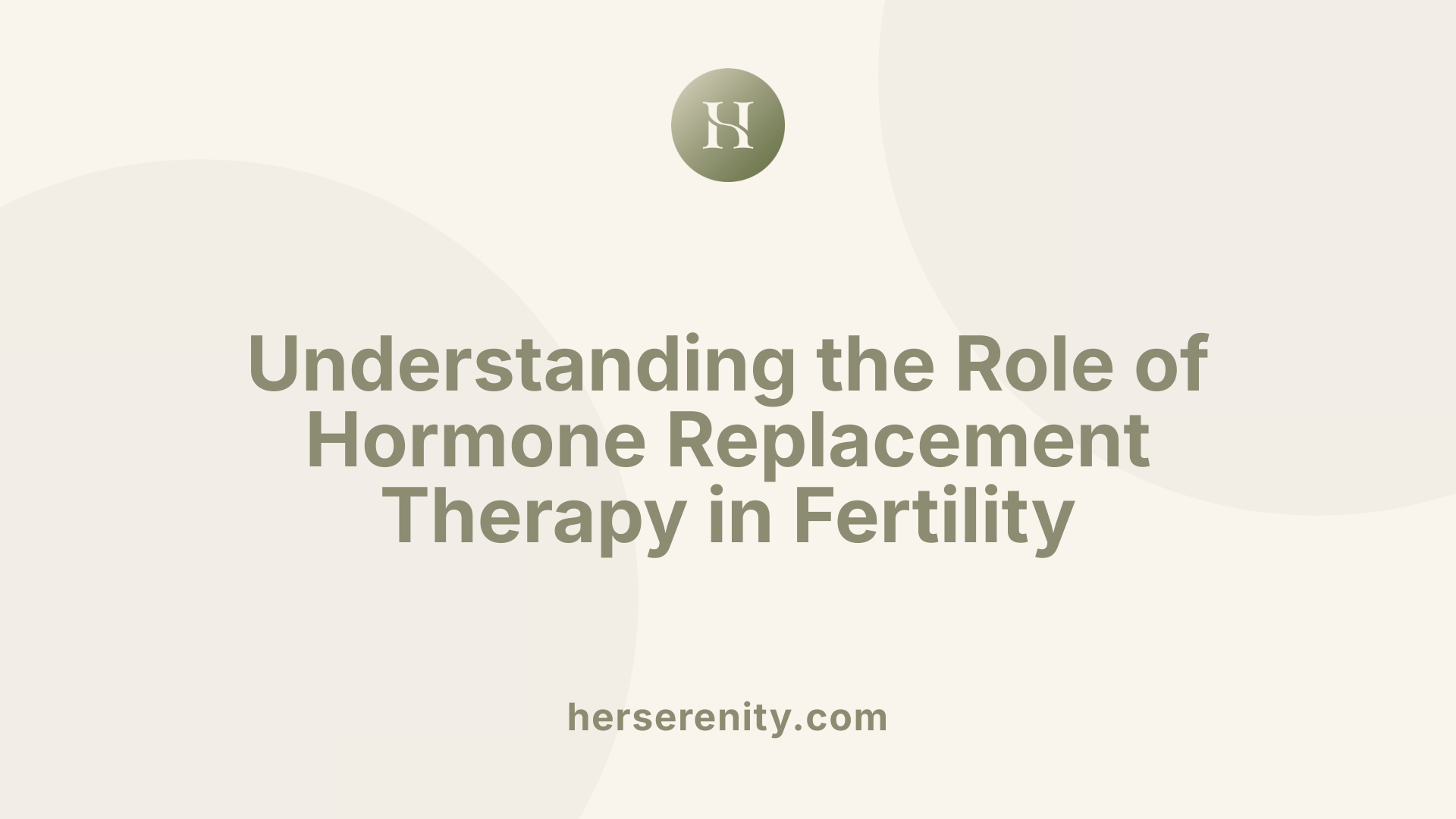
What does the process of hormone replacement therapy in fertility treatments involve?
Hormone replacement therapy (HRT) in fertility treatments is a carefully managed process designed to optimize the conditions for conception. It primarily involves administering hormones such as estrogen and progesterone to regulate and support the reproductive cycle. These hormones work together to prepare the uterine lining for embryo implantation, promote ovulation, and support early pregnancy.
In many cases, additional hormones like luteinizing hormone (LH), follicle-stimulating hormone (FSH), human menopausal gonadotropin (hMG), and human chorionic gonadotropin (hCG) are used to stimulate egg maturation, trigger ovulation, and enhance endometrial receptivity. These are often delivered through injections, vaginal suppositories, or other routes, depending on the specific protocol.
The process begins with assessing hormone levels and ovarian reserve through blood tests and ultrasounds. Based on this baseline, doctors tailor the therapy to the individual's needs. Estrogen, usually started around the beginning of the cycle, helps grow the endometrial lining. Progesterone is then added to induce a secretory transformation of the lining and support embryo implantation.
Ovarian stimulation might include gonadotropins or Clomiphene citrate to promote multiple follicle development. In some protocols, GnRH analogs like leuprolide acetate suppress premature ovulation, creating a controlled environment.
Timing is essential: hormone injections and treatments are timed to align with embryo transfer days. For example, progesterone is often initiated on the day of egg retrieval or a day after, continuing until pregnancy is confirmed. This synchronization maximizes the chances of successful implantation.
Monitoring involves regular ultrasounds to measure follicular growth and blood tests to track hormone levels, especially serum progesterone and estrogen. This information guides adjustments in medication doses and timing.
The goal of HRT in fertility treatments is to create an optimal hormonal environment that supports endometrial receptivity and embryo development, thereby increasing the likelihood of pregnancy. Throughout the process, healthcare providers oversee the treatment, manage side effects like bloating or mood swings, and ensure safety.
By carefully coordinating hormone administration, timing, and monitoring, fertility specialists aim to enhance success rates in assisted reproductive procedures such as in vitro fertilization (IVF) and frozen embryo transfer (FET).
Conclusion: The Significance of Hormone Therapy in Fertility Goals
Hormone therapy is an integral component of fertility treatments, offering targeted intervention to balance hormones, stimulate ovulation, and prepare the uterine environment. Its strategic application enhances the prospects of conception and successful pregnancy, particularly in women with hormonal irregularities or undergoing assisted reproductive techniques. While associated with certain risks and side effects, careful planning and monitoring by healthcare professionals ensure safe and effective outcomes. Understanding the mechanisms, purpose, benefits, and potential risks of hormone therapy empowers patients and clinicians alike to collaborate in achieving reproductive goals. Advances in hormone medications and protocols continue to improve success rates, making hormone therapy a cornerstone of modern fertility care.
References
- Hormonal Replacement | Fertility Center of San Antonio
- Hormone Therapy and Fertility - University of Utah Health
- Important Role of Hormones in IVF Treatment — IFG
- Hormonal replacement treatment improves clinical pregnancy in ...
- IVF (In Vitro Fertilization): Procedure & How It Works - Cleveland Clinic
- Hormonal Treatment for Infertility | Fertility Drugs for Women
- Hormone Replacement Therapy (HRT) - Yale Medicine
- Hormone therapy fertility ▷ Costs & doctors - Primo Medico
- Hormone Replacement Therapy (HRT) - IVF Australia



